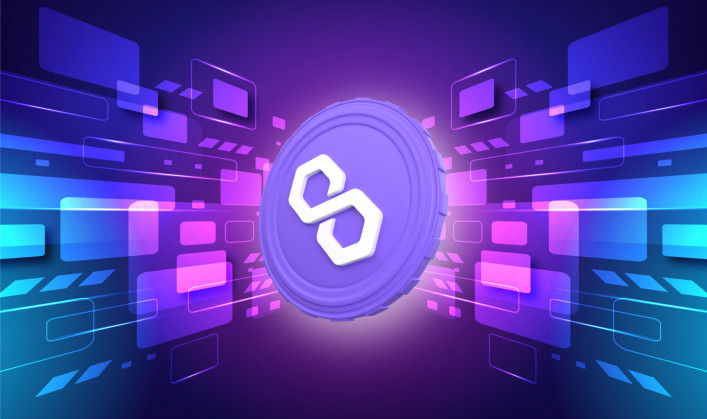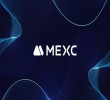7 November 2025
What Is Polygon?
Polygon is a two-tiered scaling system that operates in tandem with the Ethereum blockchain to provide fast transactions at cheap costs. The network's fees, stakes, as well as other activities, are all denominated in MATIC, the network's native coin. The MATIC Cryptocurrency may be traded on platforms such as Coinbase. Various marketplaces and games, and also the rapidly expanding Decentralized Finance ecosystem, are all hosted on the Ethereum blockchain. Ethereum's compatibility with smart contracts makes it an ideal platform for this kind of work since it can be used to create a wide variety of useful programs. Furthermore, as all these apps gain traction, the number of transactions on the Ethereum blockchain rises, which might make it infeasible for investors to make regular or minor purchases.
Also Read: What Is Kadena?
Polygon is a hybrid blockchain that utilizes both the Plasma Framework as well as PoS. Vitalik Buterin, the co-founder of Ethereum, provided the Plasma framework that Polygon uses, which makes it simple to execute massive and automated smart contracts. For the current Plasma-POS chain ecology, there will be no changes. To better meet the demands of the programmer community as a whole, Polygon is always being updated with new functionalities that are built atop of current, reliable technology. In order to accommodate a wider range of users and environments, Polygon will keep improving the foundational technology.
Also Read: What Is A Livepeer?
What Is MATIC?
The MATIC token is the native token of the Polygon network and is used for everything from holding to voting on proposed modifications to the protocol. In addition to Coinbase, several exchanges allow for the purchase and sale of MATIC. The origins of the moniker MATIC may be traced back to an earlier period of Polygon's evolution. Creators first released their product in October 2017 under the name Matic Network, but by early 2021, they had renamed themselves Polygon.
What Makes Polygon Unique?
Polygon calls itself a two-layered scaling alternative, which implies it has no plans to improve upon the underlying blockchain technology. The main goals of this project are to make blockchain transactions faster and more scalable. Polygon is developed on top of the Plasma framework, which in turn is based on the PoC checkpoints seen in the Ethereum main chain. The technological innovation behind Polygon's side chains enables as many as 65,536 transactions to be processed in a single block. Polygon's corporate side chains are fundamentally built to allow a wide range of Ethereum-based Defi protocols. Even though Polygon only works with the Ethereum basis chain, for now, the network plans to expand support for other base networks depending on user feedback. It should enable Polygon to be a decentralized, two-layered blockchain platform that is compatible with other networks.
How Does Polygon Work?
The best way to think about Polygon is as an underground subway rapid train. While it follows the same track as the standard train, it stops far less often. The parallel here is to a small railway station, with the major Ethereum blockchain serving as the locomotive. Polygon utilizes many methods to build a fast, independent blockchain network that is connected to the larger Ethereum network. Polygon employs a PoS consensus process for the generation of fresh MATIC as well as the maintenance of network security, which implies that staking MATIC is a viable option for monetizing your holdings.
How Many Polygon Tokens Are There In Circulation?
The MATIC currency supply is increased by a certain amount every month. There are a total of 10,000,000,000 MATIC coins that can ever be created, however, right now there are only 4,877,830,774 in circulation. About 19% of the overall supply was sold at the April 2019 space station auction. At a cost of $0.00263, a total of $5,000,000 was produced via the sale of MATIC tokens. Distributing the remainder of MATIC coins as described in the following: Tokens for the group account for 16% of the whole, Coins allocated to Consultants make up approximately 4% of the whole, and 12% of all coins will be reserved for use in Core Network, Coins issued by the Organization account for 21.86 percent of the whole and Coins used in the Environment make about 23.33 percent of the overall. There would be no more coins available after December 2022, as per the plan.
How Do You Use a Polygon Network?
You can perform a lot of the similar activities on the Polygon networks that you do on the main Ethereum network, but still, the costs are usually just a few cents. You and your friends may experiment with NFT marketplaces like OpenSea or "no-loss reward games" such as Pool, or use a decentralized exchange such as QuikSwap or SushiSwap to make transactions as well as trades with each other. Transfer some Cryptocurrency to a wallet that can receive Polygon transactions, such as that of the Coinbase Wallet. A few of your Cryptocurrency holdings, most notably stablecoins, can then be "bridged" to the Polygon platform. You'll still need MATIC to connect your transactions, but since costs are so cheap, even just a single dollar's value will do the trick. As a result of its cheap costs as well as relatively close transactions, the Polygon system is a great place to test out Decentralized Finance protocols in the wild.
How Is Polygon Secured?
Staking is fundamental to the Polygon environment because it is a two-layered solution that employs a network of PoS validators to ensure the safety of assets. To participate in the network's PoS consensus method, users must stake their MATIC coins and it will be rewarded with more MATIC coins.
The Bottomline
Polygon MATIC may prevent you from getting Ethereum's exorbitant prices and sluggish performance. Polygon solved Ethereum's difficulties, thus it's gaining popularity every day. Create a decentralized network. Considering Polygon's resources and capabilities, this may be simple.
Disclaimer: The author’s thoughts and comments are solely for educational reasons and informative purposes only. They do not represent financial, investment, or other advice.






